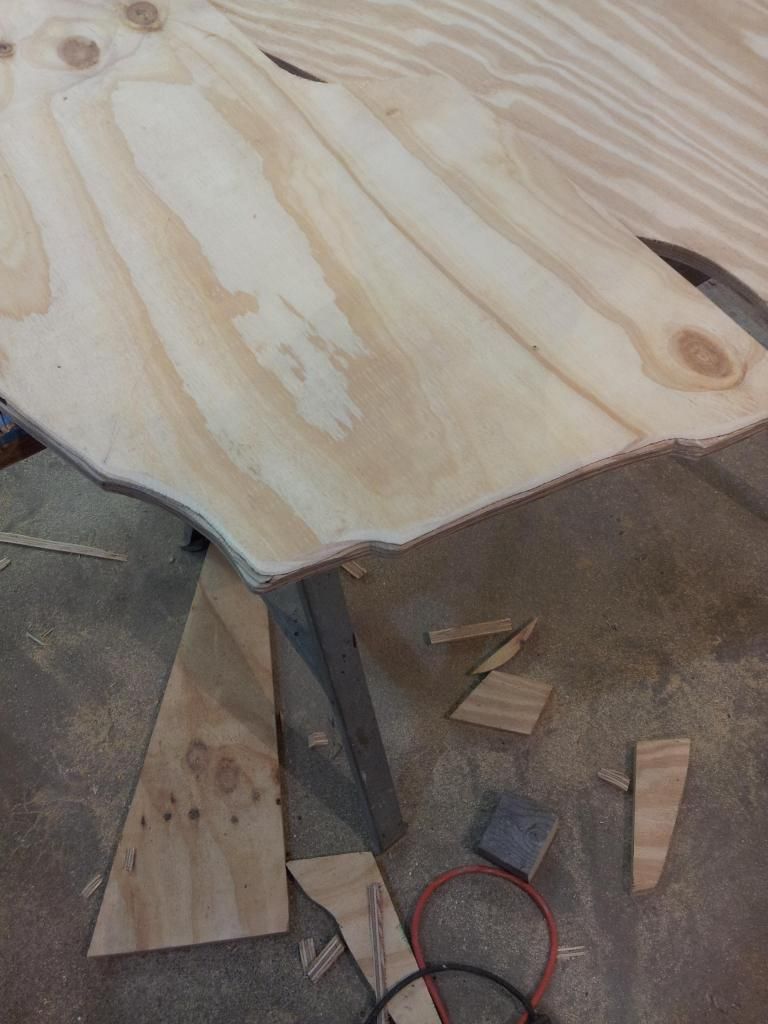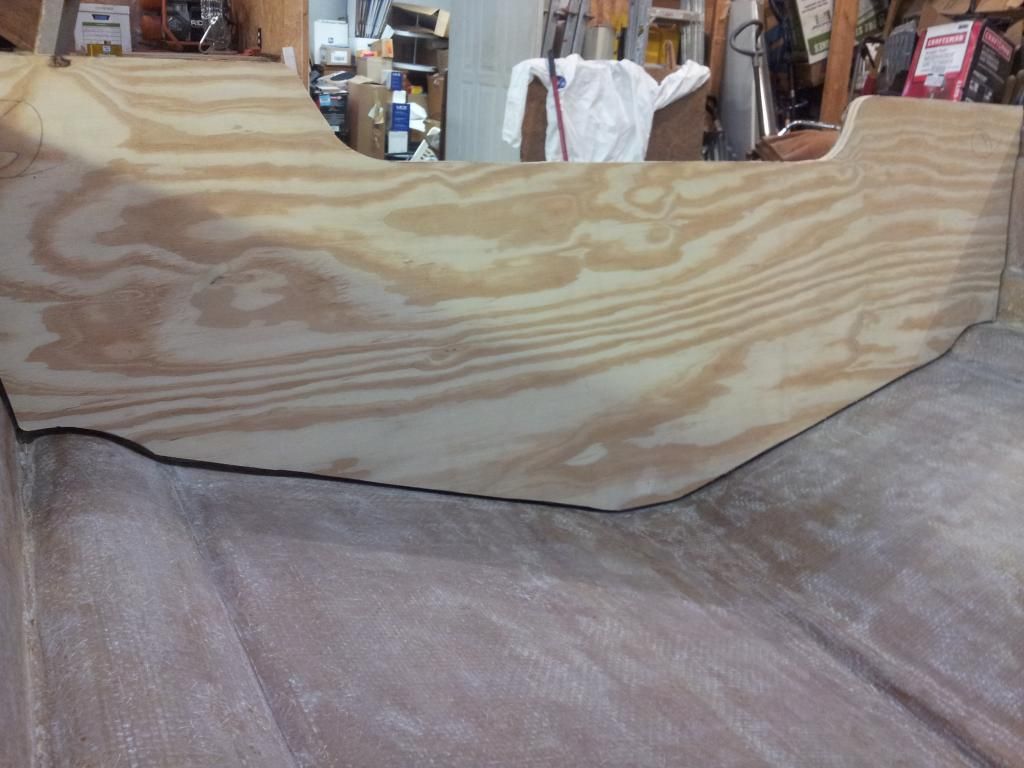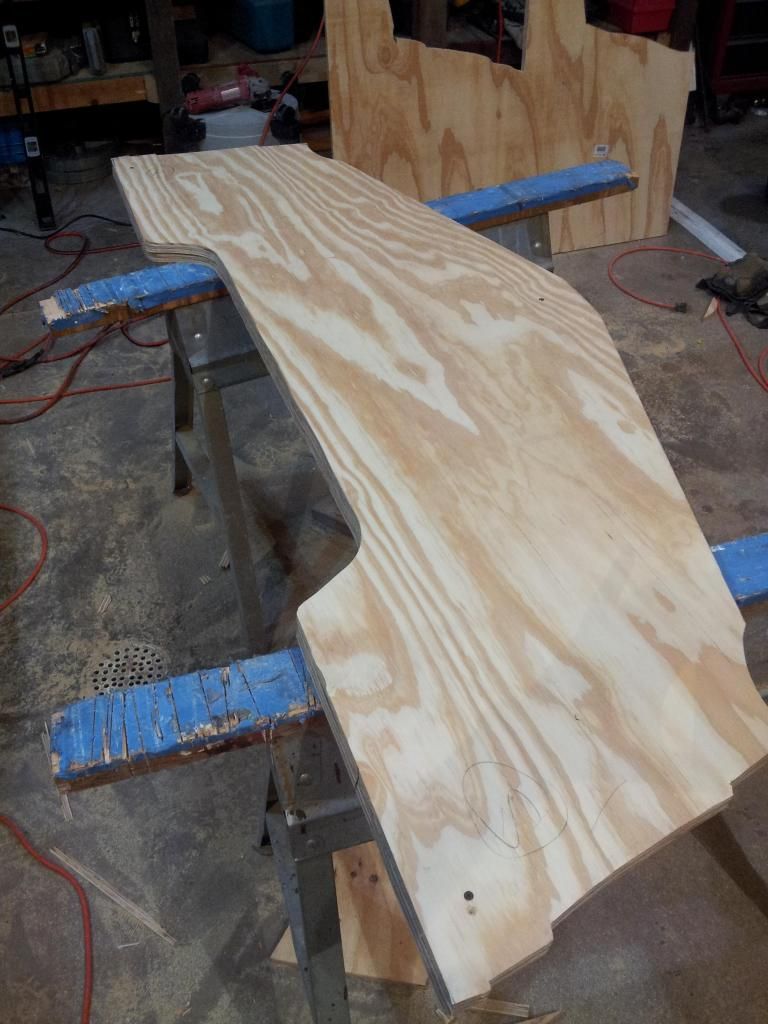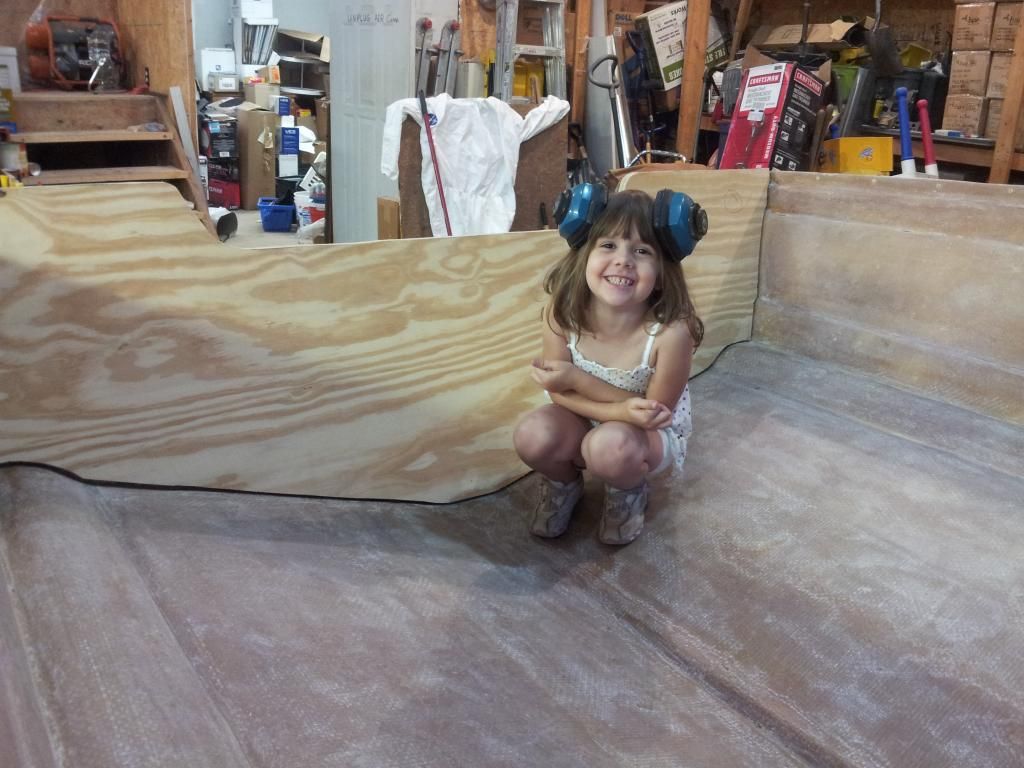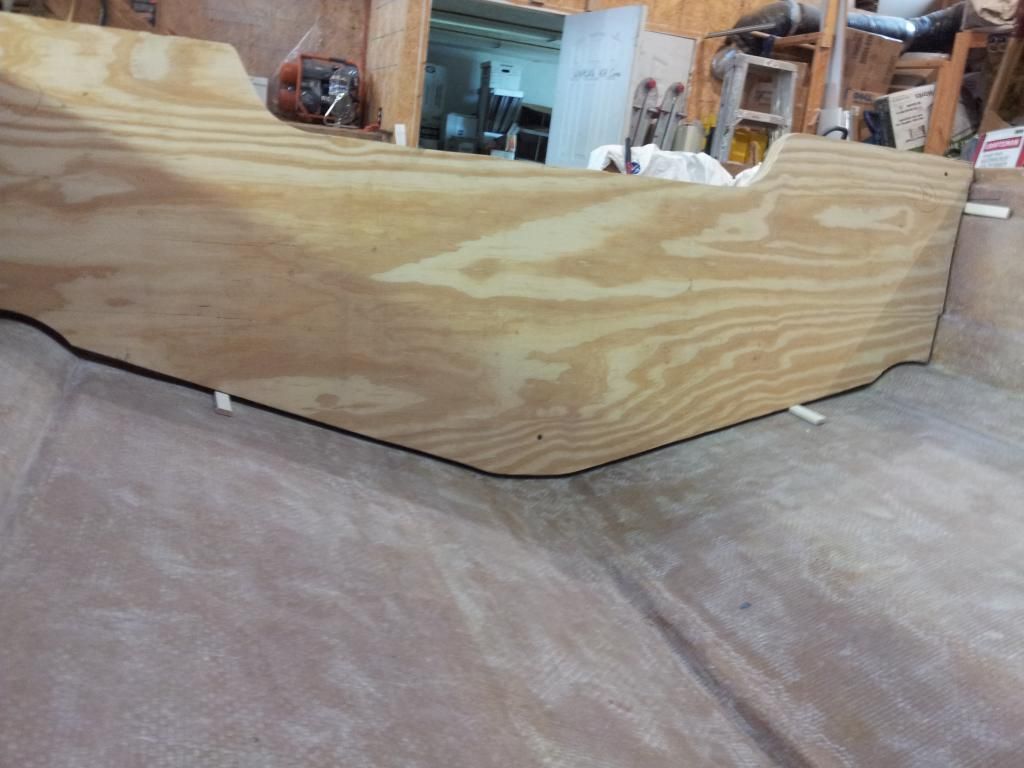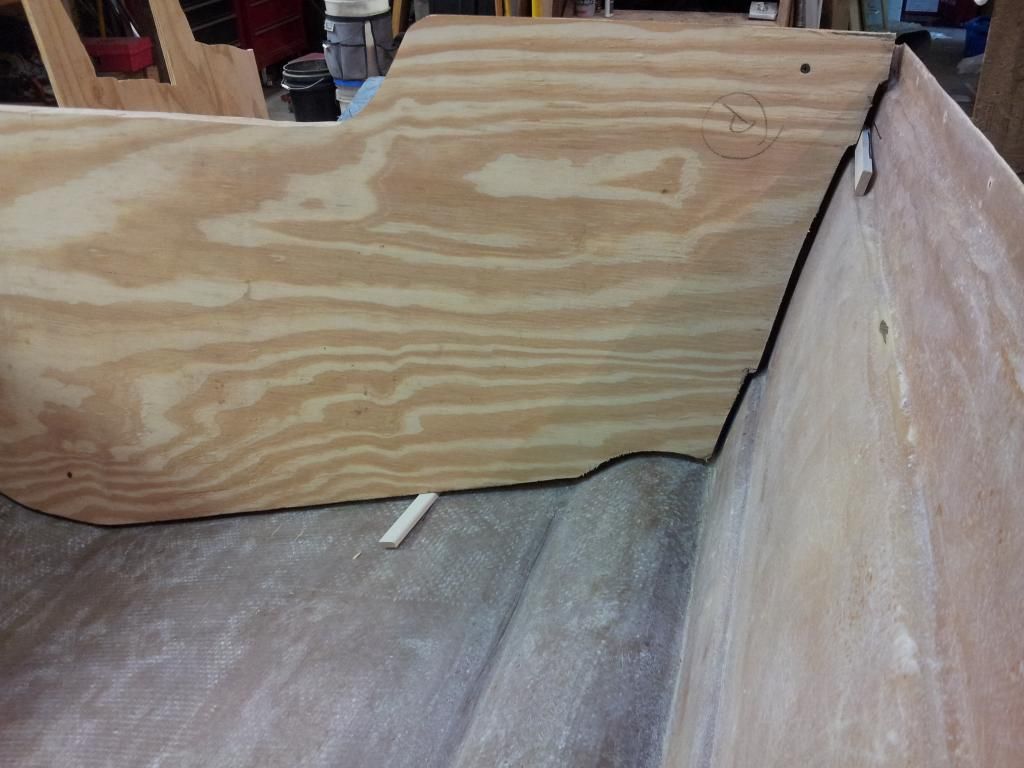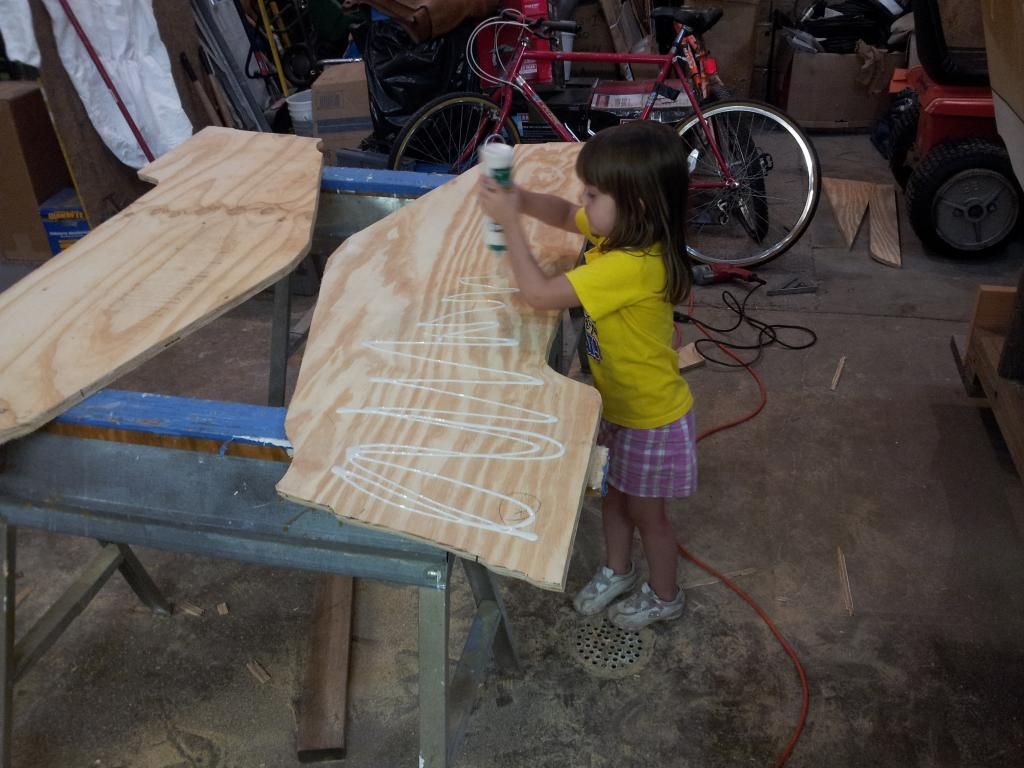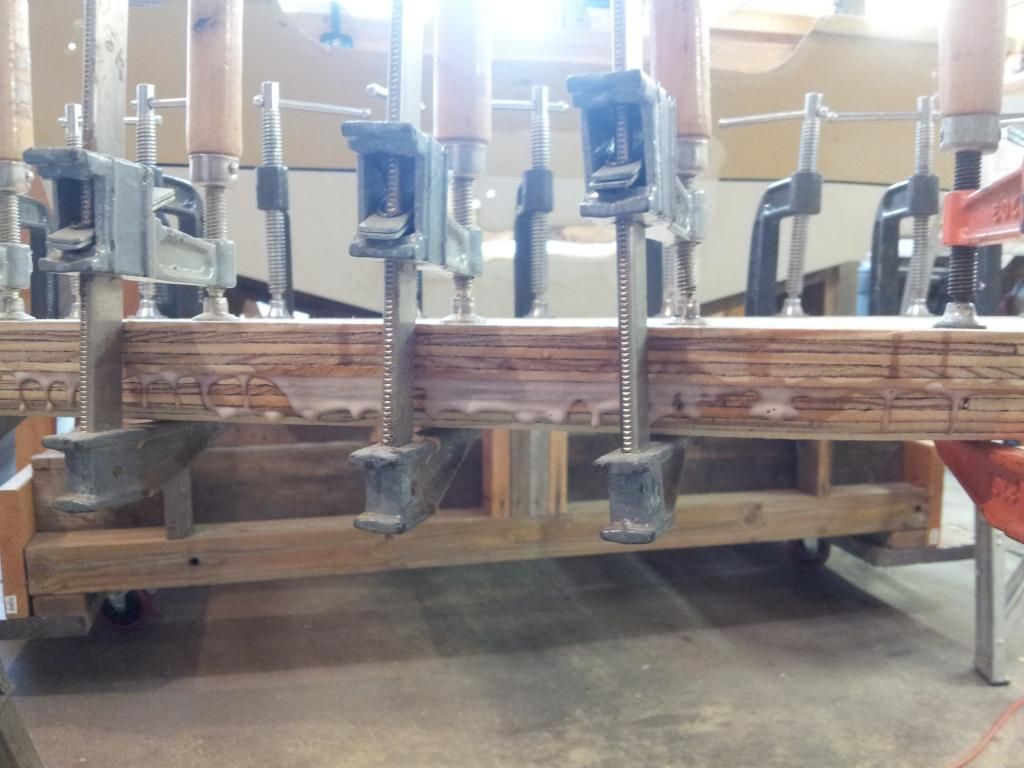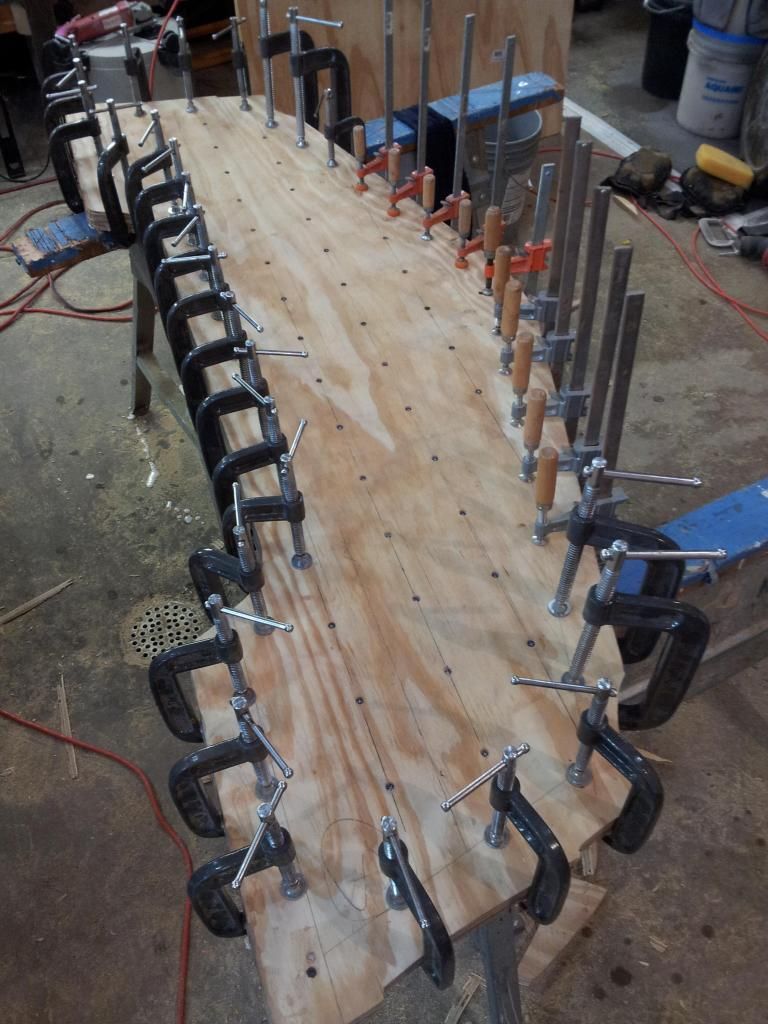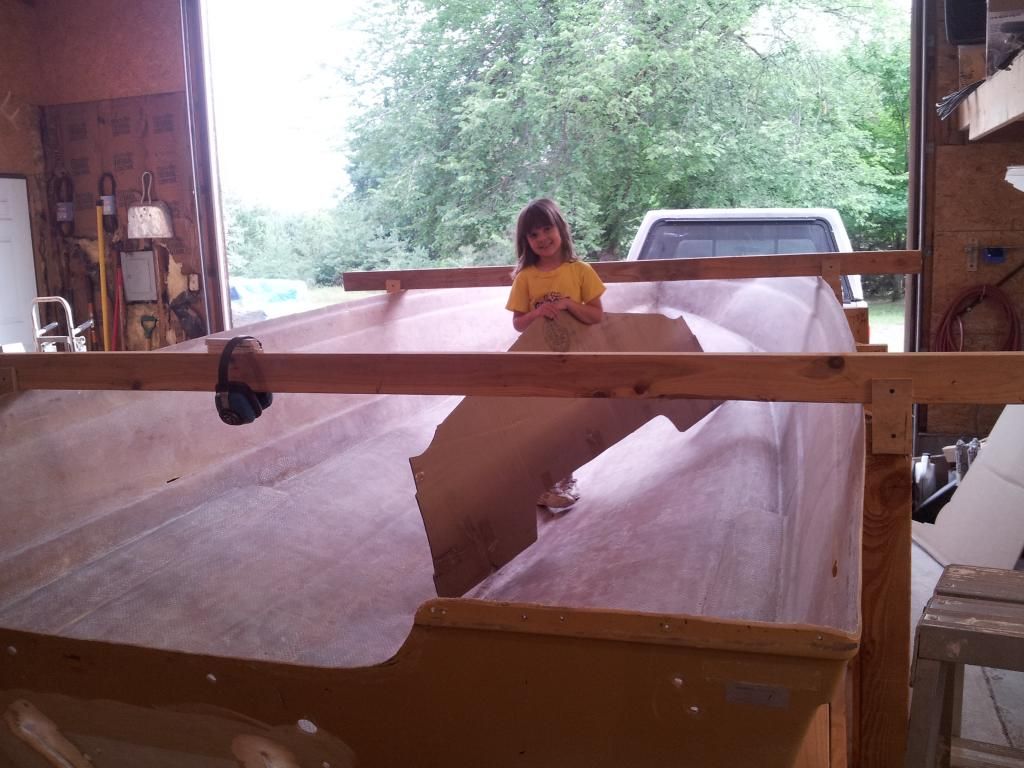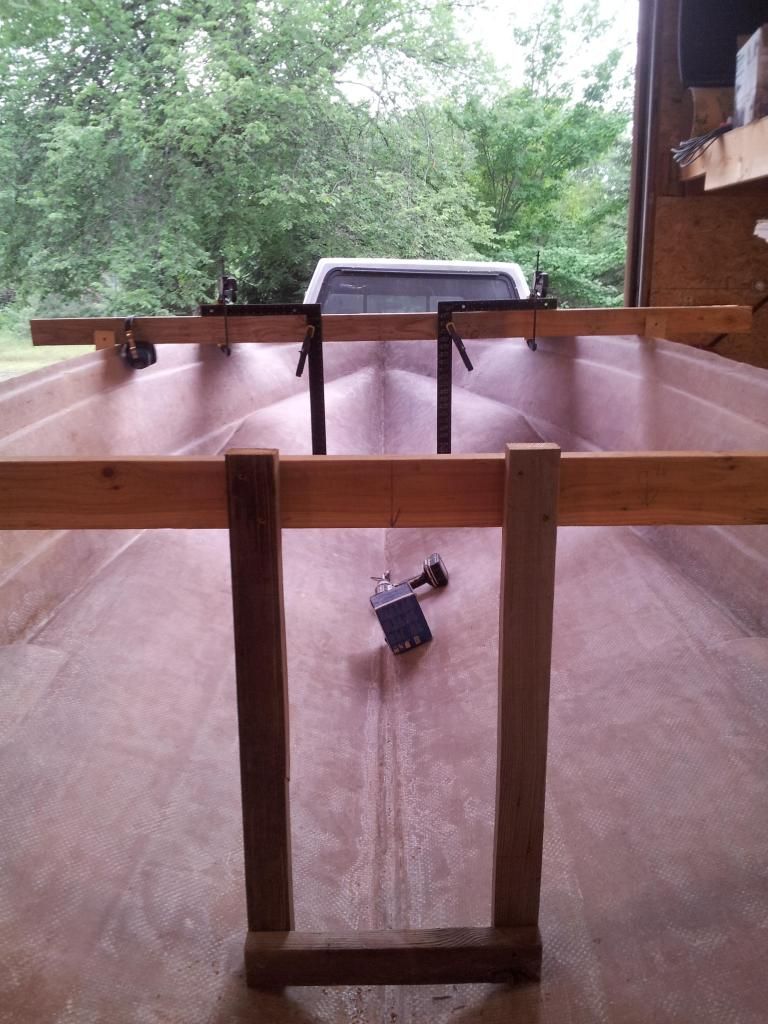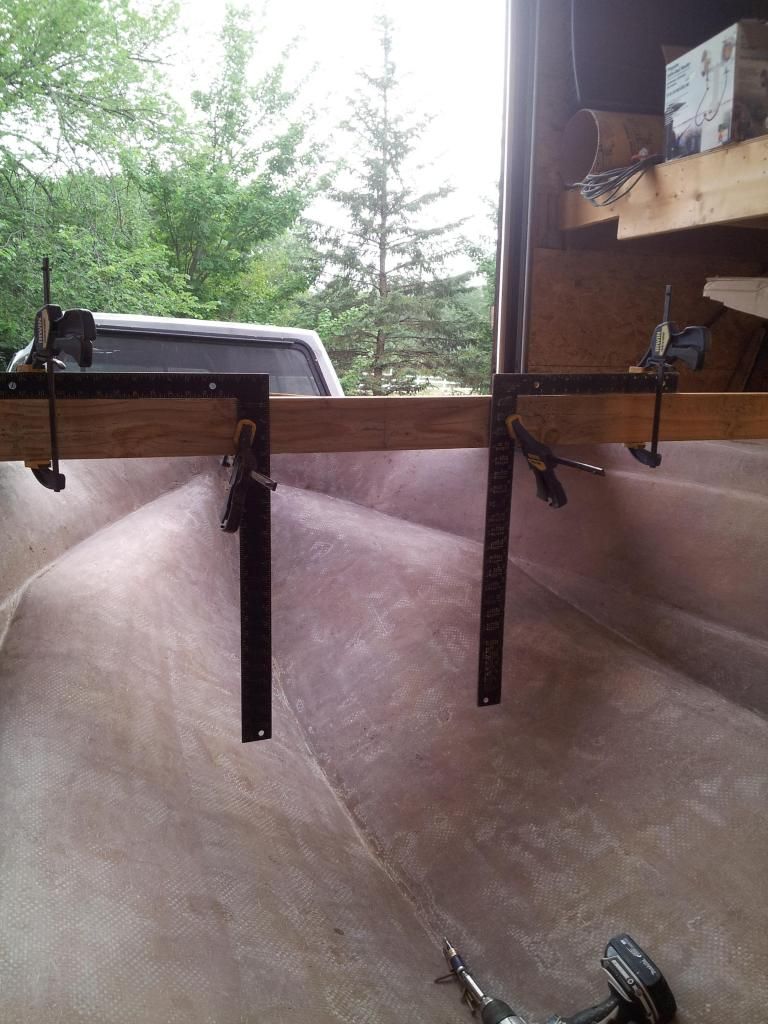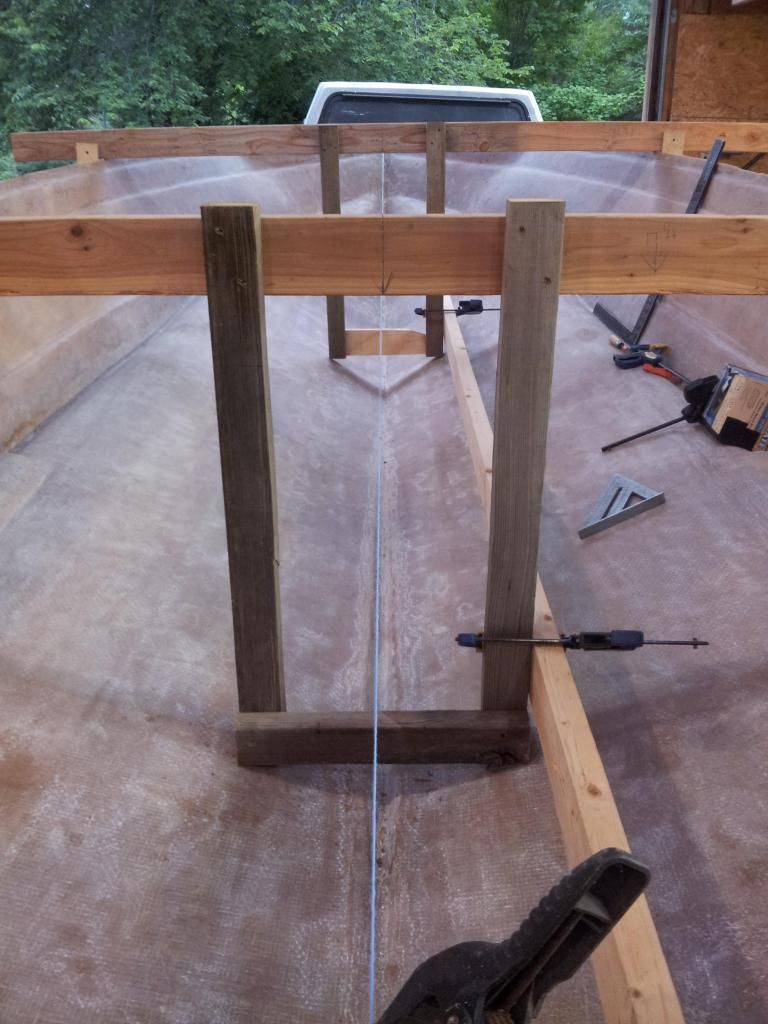Woodonglass
Supreme Mariner
- Joined
- Dec 29, 2009
- Messages
- 25,930
Well, Actually, No you don't really have to fix that hole in the transom any more than you have to fix the other holes in the transom. Let me explain. When you use PB on the wood core and outer skin it will fill the hole quite nicely during the clamp up process. All you need to do is tape a piece of plastic over the hole on the outside and any others you want to fill and then use some 1/4" plywood to back it up during the clamp up. When you remove the clamps and the backer board and plastic you'll find that all the holes are smooth and have been perfectly filled. It will be fairly easy then to do the final cosmetic work finish the transom and make it look like new again. We can cover the methods needed for the final finish work when the time comes. That's how I've done it, and how I've seen it done in the PRO repair shop's. But..It's your boat so you can do it as you see fit.
Last edited:





















